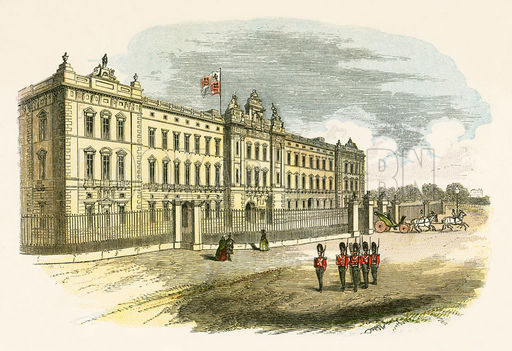An empty wall can feel like both a challenge and an opportunity. On the one hand, it may seem like a blank canvas waiting to come to life with creativity and personality. On the other, the prospect of transforming that space can feel overwhelming, especially when you’re unsure of where to begin.
Decorating a wall involves more than just hanging art or choosing paint colors—it’s about making a deliberate choice that complements the rest of your home while reflecting your personal style.
To tackle this challenge effectively, it’s essential to consider several factors, including the size of the wall, the mood you want to create, and the practicalities of your living space.
Whether you’re working with a spacious living room, a cozy bedroom, or a functional office, the strategies for decorating an empty wall can be tailored to suit your unique needs. By blending aesthetics and functionality, you can turn a blank wall into a dynamic focal point, adding depth, warmth, and character to your home.
This article explores some of the most effective and inspiring ways to decorate a wall while ensuring the space resonates with your personality and lifestyle.
The Role of Wall Decor in Enhancing a Room’s Ambiance
The way you decorate your walls can set the tone for an entire room. Walls are one of the most prominent features in any space, so their design significantly impacts how the room feels and functions.
For instance, a carefully curated gallery wall filled with personal photographs and art can tell a story, drawing people into the narrative of your life. Alternatively, opting for minimalist shelving or statement mirrors can create a sense of spaciousness and simplicity.
In many cases, an empty wall provides an opportunity to create a warm and inviting home atmosphere. This feeling is often achieved by layering textures, combining different materials, and incorporating colors that evoke comfort and joy.
The choice of decor is as much about emotional resonance as it is about visual appeal. Whether you’re aiming for a calm retreat or an energetic space, your walls are the perfect place to start crafting that vibe.
Artistic Expressions: Adding Personality Through Art
Artwork is perhaps the most common and versatile way to decorate a wall. From large-scale paintings to smaller framed prints, art allows you to express your personality, tastes, and values. When selecting pieces, consider the size of the wall and the scale of the artwork.
A massive canvas featuring abstract shapes or bold colors can serve as a statement piece, while a collection of smaller frames can create an engaging gallery wall.
For those who enjoy a touch of the unexpected, mix different mediums and styles. Pair traditional oil paintings with modern digital prints or mix photographs with hand-drawn sketches. This diversity adds depth and keeps the space interesting. Ensure the artwork complements the room’s color scheme and theme, tying the entire space together seamlessly.
If buying original art isn’t within your budget, consider exploring affordable alternatives such as prints, posters, or even DIY creations. Customizing your artwork by adding meaningful quotes, family names, or motifs can also make your wall decor feel more personal and unique.
Shelving Solutions: Combining Style with Functionality
Floating shelves, open shelving, or even built-in units can transform an empty wall into a functional and stylish feature. Shelves not only provide storage but also serve as a platform to display your personality through objects like books, plants, or cute decor figurines.
These small but charming items can add a whimsical and cozy touch to your wall arrangement, making it feel more lived-in and approachable. You can find more ideas and decor options for your home by visiting MG Maison.
When styling shelves, balance is key. Use a mix of heights, colors, and textures to create visual interest. For instance, layer books horizontally and vertically, interspersing them with potted plants or candles.
Keep in mind that less is often more; overcrowding shelves can make the space feel cluttered. Instead, leave some open areas to allow each element to shine.
Shelves are also a great way to incorporate seasonal decor. Switching out items like vases, candles, or small framed photos for seasonal pieces keeps your wall fresh and updated throughout the year.
Accent Walls: The Power of Paint, Wallpaper, and Texture
An accent wall can dramatically transform a room without requiring you to overhaul your entire decor scheme. Paint and wallpaper are two of the most popular ways to create an accent wall.
A bold color, such as navy blue, emerald green, or mustard yellow, can add depth and richness, making the wall the room’s focal point. On the other hand, soft pastels or neutral shades can create a calming and serene environment.
Wallpaper offers an incredible range of possibilities, from intricate patterns and floral designs to geometric shapes and textured finishes. Peel-and-stick wallpaper is especially popular for its ease of application and removal, making it ideal for renters or those who like to change their decor frequently.
For a more tactile approach, consider adding texture to your wall. Shiplap, reclaimed wood panels, or even a faux brick finish can add character and dimension. Textured walls work particularly well in rustic, farmhouse, or industrial-style interiors, but they can also be adapted to more modern aesthetics with the right color choices.
Mirrors and Reflective Surfaces: Enhancing Light and Space
Mirrors are a fantastic way to make a room feel larger and brighter. By reflecting light, mirrors can open up even the smallest spaces, creating the illusion of more square footage. A single large mirror with an ornate frame can act as a centerpiece, while a collection of smaller mirrors arranged in an interesting pattern can add flair and personality.
Reflective surfaces aren’t limited to mirrors. Metallic wall art, shiny tiles, or glass shelving can achieve a similar effect, adding a touch of glamour and sophistication. Be mindful of placement when incorporating reflective elements; positioning mirrors opposite windows or light sources can maximize their impact.
Personal Touches: Making the Space Truly Yours
One of the most rewarding aspects of decorating an empty wall is the opportunity to make it uniquely yours. Personal touches can range from framed family photos to a DIY corkboard filled with mementos. Displaying items that hold sentimental value, such as travel souvenirs, heirlooms, or hand-painted crafts, gives the space a story and connects it to your life.
You might also consider creating a feature wall that evolves over time. Install a corkboard, pegboard, or magnetic board that allows you to switch out items like photos, notes, and small art pieces. This approach keeps the wall dynamic and ensures it remains a meaningful and functional part of your home.
Greenery and Natural Elements: Bringing the Outdoors In
Adding plants to a wall not only enhances its visual appeal but also introduces a sense of calm and freshness to the room. Vertical gardens, also known as living walls, are an increasingly popular choice for those who want to make a bold statement while reaping the benefits of improved air quality. If a full living wall feels daunting, consider hanging planters or installing shelves specifically for potted plants.
For a subtler touch, incorporate botanical prints or use dried flowers and branches in creative wall arrangements. These elements work particularly well in spaces designed with natural or bohemian aesthetics in mind, adding warmth and texture without overwhelming the decor.
Decorating an empty wall is an opportunity to bring your space to life, turning it into a canvas for creativity and self-expression. By exploring a mix of artistic, functional, and personal elements, you can craft a design that not only enhances the room’s ambiance but also reflects who you are.








